
Ornamental grasses are grasses grown as ornamental plants. Ornamental grasses are popular in many colder hardiness zones for their resilience to cold temperatures and aesthetic value throughout fall and winter seasons.

Melica is a genus of perennial grasses known generally as melic or melic grass. They are found in most temperate regions of the world.

Glyceria is a widespread genus of grass family common across Eurasia, Australia, North Africa, and the Americas.
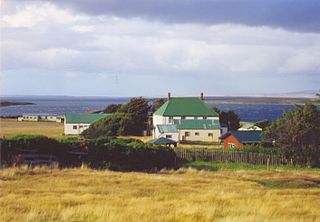
Tussock grasses or bunch grasses are a group of grass species in the family Poaceae. They usually grow as singular plants in clumps, tufts, hummocks, or bunches, rather than forming a sod or lawn, in meadows, grasslands, and prairies. As perennial plants, most species live more than one season. Tussock grasses are often found as forage in pastures and ornamental grasses in gardens.

The Blue Oak Ranch Reserve, a unit of the University of California Natural Reserve System, is an ecological reserve and biological field station in Santa Clara County, California. It is located on 3,260 acres (13.2 km2) in the Diablo Range, northwest of Mount Hamilton, at 1,500 ft (460 m) elevation.

Melica aristata is a species of grass known by the common names awned melic and bearded melicgrass.
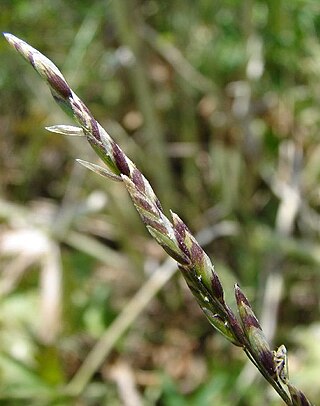
Melica bulbosa is a species of grass known by the common name oniongrass. The common name comes from the onionlike appearance of the corm at its root; it is not related to the onions. It is native to western North America from British Columbia to the Rocky Mountains to California. It may or may not occur as far east as Texas.
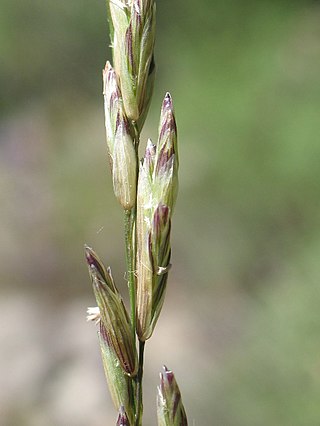
Melica californica is a species of grass known by the common name California melic.
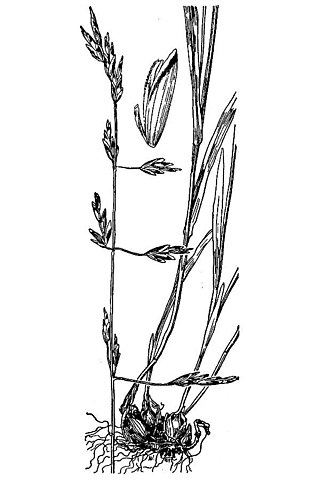
Melica fugax is a species of grass known by the common names little oniongrass and little melic. It is native to western North America where it usually grows in volcanic soils in forest and plateau habitat from British Columbia to the Sierra Nevada and North California Coast Ranges in California.

Melica geyeri is a species of grass known by the common name Geyer's oniongrass.

Melica harfordii is a species of grass known by the common name Harford's oniongrass.

Melica spectabilis is a species of grass known by the common names purple oniongrass and showy oniongrass.

Melica stricta is a species of grass known by the common name rock melic.

Melica subulata is a species of grass known by the common name Alaska oniongrass.

Melica torreyana is a species of grass known by the common name Torrey's melicgrass.
M. californica may refer to:

Melica ciliata, the hairy melic or silky spike melic, is a species of flowering plant in the grass family Poaceae, native to Europe, north Africa and temperate Asia. It has been introduced to South Australia.
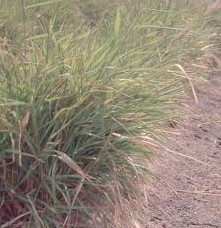
Melica nitens is a species of grass known by the common names threeflower melicgrass or three-flowered melic. It is native to the central United States.
Melica smithii is a species of grass that grows in the Canadian provinces Alberta, British Columbia, Quebec, Ontario, and the US states Idaho, Michigan, Montana, South Dakota, Washington, Wisconsin, and Wyoming. The species is named after Charles Eastwick Smith.
This page is based on this
Wikipedia article Text is available under the
CC BY-SA 4.0 license; additional terms may apply.
Images, videos and audio are available under their respective licenses.
















